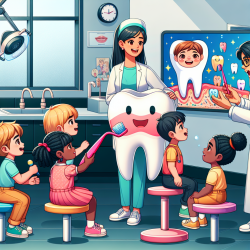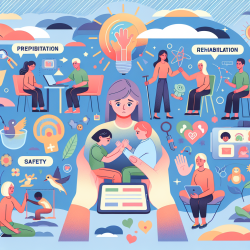In the evolving landscape of speech-language pathology and audiology, the integration of clinical education within service delivery presents both challenges and opportunities. Drawing insights from Anne L. Godden's research, "Service Delivery and Student Clinical Education: Are The Two Compatible?", this post explores strategies to enhance clinical education while ensuring high-quality service delivery. By addressing the perceived conflict between these two critical aspects, we can foster a more effective learning environment for future professionals.
Godden's research highlights the crucial role of clinical practicum in preparing speech-language pathologists and audiologists. However, the challenge of finding sufficient practicum sites due to a shortage of qualified professionals raises important questions about the compatibility of service delivery and clinical education. This dilemma underscores the need for collaborative efforts among professional associations, universities, governments, and service agencies to find viable solutions.
One significant issue identified is the ambiguity surrounding the supervisor's role and responsibilities. To mitigate this, it's essential for supervisors to see themselves as integral to the educational process, understanding that their guidance is pivotal in bridging theoretical knowledge with practical application. Here are some strategies to enhance the supervisory experience and, by extension, clinical education:
- Clarify Expectations: Clear communication about the roles and responsibilities of both supervisors and students can help alleviate any ambiguity. Establishing a mutual understanding of expectations sets the stage for a productive learning environment.
- Quality of Care: Concerns about the quality of care provided by students can be addressed through adequate supervision. Supervisors can ensure that students are well-prepared and that their involvement enhances patient care rather than compromises it.
- Recognize and Support Supervisors: Acknowledging the critical role of supervisors in clinical education is vital. Providing support, whether through training, resources, or recognition, can empower supervisors to fulfill their role effectively.
- Promote Research and Continuous Learning: Encouraging both supervisors and students to engage in ongoing research and learning can enrich the clinical education experience. Staying abreast of the latest developments in the field ensures that clinical practice is informed by current evidence.
Addressing the individual and institutional costs associated with supervision is another area of concern. It's important to recognize the tangible and intangible benefits that supervising students can bring to a clinical setting. By viewing supervision as an investment in the future of the profession, we can reframe the narrative around the costs and benefits of clinical education.
Ultimately, resolving the perceived conflict between service delivery and clinical education requires a collective effort. By embracing the role of clinical education in service delivery, we can ensure the development of highly competent professionals who are well-equipped to meet the demands of the community. Let's work together to create an environment where clinical education and service delivery are not only compatible but synergistic.
To read the original research paper, please follow this link: Service Delivery and Student Clinical Education: Are The Two Compatible?










